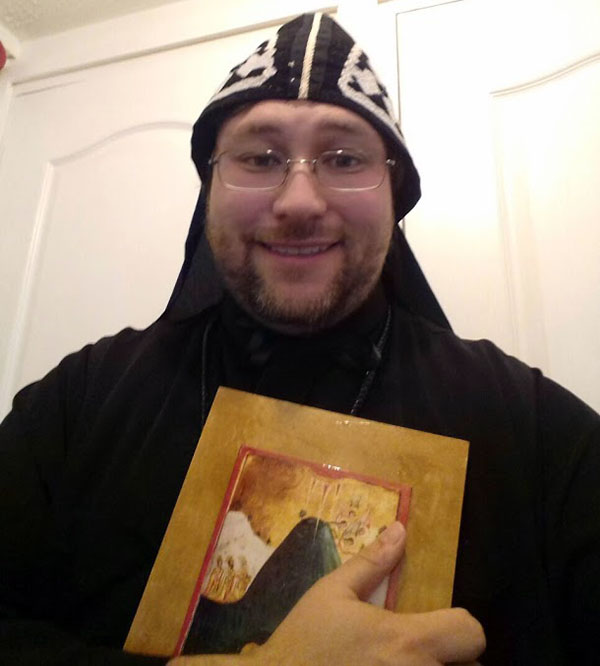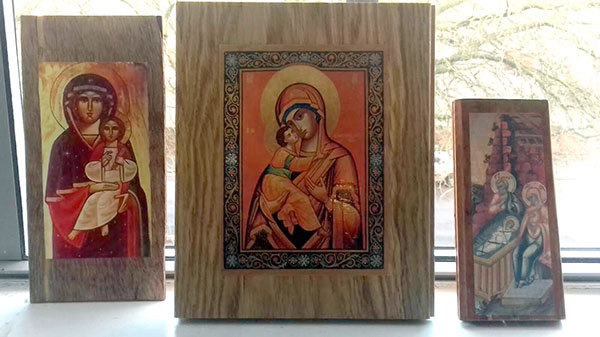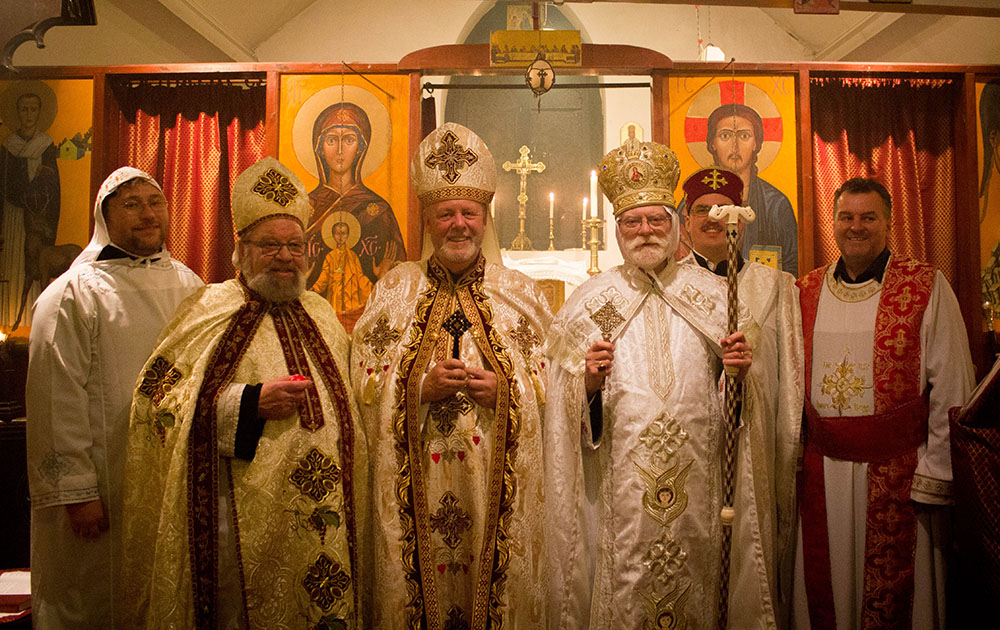In the Footsteps of St David and St Patrick
Father Antony Westwood of St. Petroc’s British Orthodox Mission in Torbay will be co-leading a small group of pilgrims on a five-day pilgrimage in Pembrokeshire, West Wales from May 23-27 the journey is titled ‘In the Footsteps of St David and St Patrick’ and will be based at St Non’s Retreat House near to St. Davids. Father Antony is a leader for the non-profit making organisation Journeying.co.uk, which started life in 1988 as ‘Pilgrim Adventure’ and leads small groups of people on pilgrimage to the more remote parts of Britain and Ireland, following in the footsteps of the early Celtic Saints.
As a Journeying leader and Orthodox Priest, Father Antony has discovered a deepened closeness to God through his travels to remote, liminal places and it is this ‘connecting on the edge’ that he wishes to share with others, and to this comes his ministry of the outdoors and his closeness to the early Saints of Britain and Ireland this in turn follows his deep appreciation of the Orthodox heritage of these islands maintaining two thousand years of tradition and life.
Father Alexis and the Holy Ikons

Father Alexis Raphael recently had a successful exhibition of wood-mounted ikon prints that he made at St Mary Magdalen’s Church, Bailgate, Lincoln. Originally scheduled from 24-31 March, it was extended until 6 April. The exhibition provided numerous opportunities for him to explain the spiritual significance of holy ikons, their place in Orthodox worship and other aspects of the Orthodox faith. On Saturday, 21 April, some of his icons were used at an ecumenical Taizé service in Lincoln and he has also been invited to give a talk about ikons to primary school children in Uphill Lincoln next month.

Holy Pascha at Cusworth

The traditional Holy Week services at the Church of St. Mark and St. Hubert, Cusworth Village, were led by Father David Seeds, assisted by Father Alexis Raphael, and well supported by the local congregation. On Paschal Eve, 15 April, the congregation was joined by Metropolitan Abba Seraphim, Archdeacon James and Subdeacon Athanasius, for the late night Vigil Service followed by the Divine Liturgy for Holy Pascha. During the service Abba Seraphim ordained Deacon Antony Westwood to the Sacred Order of the Priesthood to serve the newly formed British Orthodox Mission of St Petroc in Torbay, Devon.
In his homily, Abba Seraphim, commented on a recent ComRes poll which reported that one in four people who identify themselves as “Christians” in England believe that the physical resurrection of the Lord Jesus did not happen. Quoting St. Paul’s first epistle to the Corinthians (XV: 1-58) Abba Seraphim emphasised the centrality of the resurrection without which our faith would be in vain, and insisted that the death and resurrection, which we declared with our traditional salutation, “Christ is Risen !” underpinned the Christian faith. By way of affirmation the hearty singing of traditional paschal hymns rang our loudly from the crowded church and was audible throughout Cusworth village.

At the conclusion of the service, at which traditional foods from Cypriot, Latvian, Roumanian, Bulgarian and Russia Orthodox dishes joined with British foods in a fellowship buffet supper, which continued into the early hours of Holy Pascha morning.
Holy Saturday at St. Felix
On the morning of 15 April, Abba Seraphim celebrated the Holy Saturday Liturgy at St. Felix, Babingley, assisted by Archdeacon James and Subdeacon Athanasius Hall. He preached on the “Harrowing of Hell” to the congregation who had travelled from Holbeach, Wisbech, Burnham Norton and other surrounding villages in North Norfolk and Lincolnshire, before travelling to Fakenham to take the sacrament to Deacon Mark Saunders; who is convalescing from a period of ill health, which has led to him being in hospital for the past few weeks. During this period Deacon Mark has received regular visits from Abba Seraphim and other regular worshippers from St. Felix Church, as he has made a steady recovery to full health. To mark the Paschal Feast the outside of St. Felix has been newly repainted and offered a festive appearance in the Norfolk spring sun.
The Palm Sundays bombings in Alexandria & Tanta
Following the tragic attacks on Coptic Churches on 9 April, Abba Seraphim commented:
“I heard the news of the latest terror attacks on Coptic churches in Egypt as I was leaving church, having also celebrated the Feast of Our Lord’s Triumphal Entry into Jerusalem. The viciousness and depravity of those who deliberately target worshippers in churches during sacred seasons, clearly demonstrates that these people are not motivated by any authentic religious feeling. The late Pope Shenouda always insisted that religion is about doing good and trying to benefit those around us and does no harm to our neighbour; whereas these people only embrace death, destruction and hatred. The message of Holy Week, of our God whose compassion and mercy has led Him to assume the fullness of our humanity in order to suffer pain and death so that we might live eternally, is the very antithesis to this barbarous mediaeval ‘caliphate’ where human life – whether of its own misguided devotees or of innocent and harmless strangers – has no intrinsic value.
As before, our prayers are with these New Martyrs, and also with their bereaved friends and relations, and with those wounded in the attacks. Having recently suffered another terrorist attack in London, with the solemn obsequies of the murdered police constable, Keith Palmer, taking place in the streets of the city today, and with the tragic reports of the recent Stockholm attack still in the news, we stand together in sympathy with other victims of this evil. Our resolve to remain tolerant and just and to respect others of different or no faiths, provided that they are peaceful and humane, will not be undermined by these servants of Satan, because Love does not delight in evil but rejoices with the truth. It always protects, always trusts, always hopes, always perseveres. Love never fails.”
